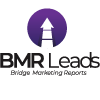Qualified Lead Tips
We can show you the best sales techniques for exploiting qualified business leads—ours or anyone else's
This value-added advice is more than just telemarketing sales tips
The sad truth is that most businesses don't make the most of their prospects and leads, even if they are truly qualified business leads. There's more to it than just a good script or a well-rehearsed phone manner. That's why we offer you more than mere telemarketing sales tips.
Our inside track to what does work
BMR Leads specializes in office/business relocation leads. We've had feedback from many clients like you as to what does and does not work when using qualified business leads to secure new business.

No advance preparation
The sales manager doesn't know the leads are coming (BMR gives you at least 2 days notice so that you can plan your work).

Disorganized approach
These sales reps typically lack a carefully planned strategy for approaching new accounts and lack the sales tools for making a first-class introduction.

Delayed managerial response
The sales manager gets around to looking at the leads within a couple of days. Then he gives them to the sales reps.

Delayed concrete action
These second-tier reps are typically the ones who put off their new business development. Perhaps they have a lead group meeting soon after the leads are received. So instead of making the calls they go to the meeting and share the leads with the others in their group. Not only have they delayed action, but they've guaranteed that their formerly "exclusive" leads will instead by overcalled by many other sales reps.

Leads don't go to reps who can exploit them best
The top performing sales reps are typically busy, and are reluctant to take on new business development. So the leads are given to the reps who need the new business. But these are not your top reps, and they're typically not the top reps because they don't have an organized approach to developing new business.
No telephone call plan + no structured introductory process = no success!
The upshot?
So by the time they finally pick up the phone the prospect has been bombarded with calls from both the original lead-service subscribers and everybody else the sales representatives have shared the leads with.
The prospect is totally closed to any additional new suppliers. The sales rep then tells the sales manager, "These leads are lousy!"
A confession
We know the above "approach" doesn't work. Many years ago we used to do it this way ourselves. We can sure tell you wonderful stories!
Guaranteed not to work:
We remember one sales rep who thought the perfect opening line for his initial phone calls was, "Hi, I understand you're moving." The prospect should never realize that you know they are moving: this elicits an instant negative defensive reaction.
Another classic was, "Hi, I understand you're going through a major restructuring." another zinger. Where is the business value equation for the receiver of these calls?
We can show you the best sales techniques for exploiting qualified business leads—ours or anyone else's
There are two schools of thought. Our sister company is now doing a detailed study with a client. When the study is done we'll be able to tell you which one produces the best yield.

Don't send any introductory material, arrange all appointments from a very carefully structured telephone call.
School 1

Plan and design multiple contact points, using various media, with the prospect prior to any meeting.
School 2
Our sister company takes the second approach. Here's what they do:

1. Edit
In any collection of 50 leads there will be companies that don't fit your ideal prospect profile. They may be too small, be located outside your geographic range, or operate in the wrong industry. Delete these from your collection. Following-up on the wrong prospects costs time energy and effort.

2. Confirm
Call to confirm that the contact person listed is indeed responsible for buying your particular product or service. Ask the receptionist to help you: say that you are sending a letter of introduction to the company and would like to verify the information you have. It's imperative that everything be 100% accurate, and you should do this verification immediately. Even if you already know your information is accurate, this is a way to get to know the "gatekeeper." Ask the receptionist his or her name if possible. We believe that multiple short calls are more effective than trying to do everything in one call.

3. Introductory mail
Next, get your introductory direct mail piece into the mail as soon as possible after the leads arrive in your office and after you have confirmed the correct contact person. Your introductory letter should be professionally written and should explain your value proposition. Attach client lists and testimonials. Mail merge is quick and easy once you're used to it. our sister company has their short run letter generation down to 2 minutes per introductory letter.

4. Voice
Leave a message for the contact person you're targeting. This should be like a 30-second radio spot advertisement explaining your business value proposition, who you are, and what you do, and asking the recipient to look out for your introductory letter. Have an alternative script ready in case you make contact, in any case, the message is the same. Do this as soon as possible after you have received the leads, verified contact info, and sent the follow-up mail.

5. Strategic follow-up by phone
Figure out the earliest possible day that the recipient may have received the mail piece, and call in the afternoon of this day. It doesn't matter what day of the week, any day is a great day to call to set an appointment. Don't ask if they have received the mail yet; just say that you recently sent a letter of introduction.

6. Make sure you script is professional
Figure out the earliest possible day that the recipient may have received the mail piece, and call in the afternoon of this day. It doesn't matter what day of the week, any day is a great day to call to set an appointment. Don't ask if they have received the mail yet; just say that you recently sent a letter of introduction.

7. Set an appointment
Use the call outline to close for a face-to-face appointment.

8. Send a confirmation
When you have arranged a face-to-face appointment, send a confirmation e-mail. Include a link to your website.

9. Orient the prospect
Our sister company also sends out a bio incorporating company background info of the rep attending the meeting. This ensures that the prospect, as well as knowing the rep's voice from the phone, knows what the rep looks like, and knows something about your company before the initial sales meeting.

10. Prepare yourself
Finally, prepare well for the meeting. Read about the prospect on their web site. Check the local business press to see if they have made the news. Be reasonably informed about all aspects of the prospect's business. The days when you could sit in front of a new prospect and ask them to tell you something about their business are long gone!

11. Be prompt
Show up on the correct date and at the correct time. Never reschedule that first appointment.
Best sales management methods:
Have reps share success stories: During your sales meetings ask one rep to tell a story about how they were successful in landing some new business (it must be new business developed from scratch). When the rep shares the story with his or her peers, the attention will reward and reinforce the behavior in your organization.
Plan a multi-step approach: An average sale requires eight touches, but most sales reps plan an all or nothing one-time-shot assault. Each sales action the rep performs should set up the next sales action in the process. It's the sales manager's job to develop a carefully prepared and paced strategy.
Keep score: Most businesses don't keep track of how their new business development is going. How many new business opportunities were pursued each month? How many face-to-face meetings were arranged? "What was the dollar value of potential sales? What was the dollar value of new business actually closed?
For an excellent new business planning tool contact us and ask for the New Business Exponential Growth Chart.
Rep Management
Top sales reps should handle qualified leads from BMR: Truly qualified business leads are gold. They are your best shot at closing a new substantial sale.
Emphasize the priorities: Make sure the reps know that it is crucial to act quickly on these qualified business leads because they are time sensitive. Emphasize the importance of following up.
Let the reps decide if they want to turn back new opportunities: If one rep doesn't succeed with a given lead quickly, don't take it away. Many leads have a long gestation period. A rep should be able to provide an update on their progress with a prospect within two weeks. If the rep wants to give a particular lead back to the sales manager it should be at the rep's discretion.
Case Management & Tracking
Tracking system should be appropriate: Make sure your lead tracking system meets the needs of such time-sensitive, qualified business leads. Your tracking system should record the confirmed prospect moving date, date of initial call, follow-ups, lead feedback, stages of the process, and finally when the sales was closed or lost. Look for patterns and you will find them.
Reps should keep detailed records: Your tracking system should allow reps to record special details on individual leads. There might be relevant information on a particular lead that doesn't fit a standard tracking form. Our sister company uses Act, a very inexpensive, easy to use contact management program.
"Your suggestions are concrete and relevant as they opened my eyes to matters I'd never thought of. Thanks."
—Stephen S., British Columbia
SCHEDULE A CALL NOW!
604-243-3870

